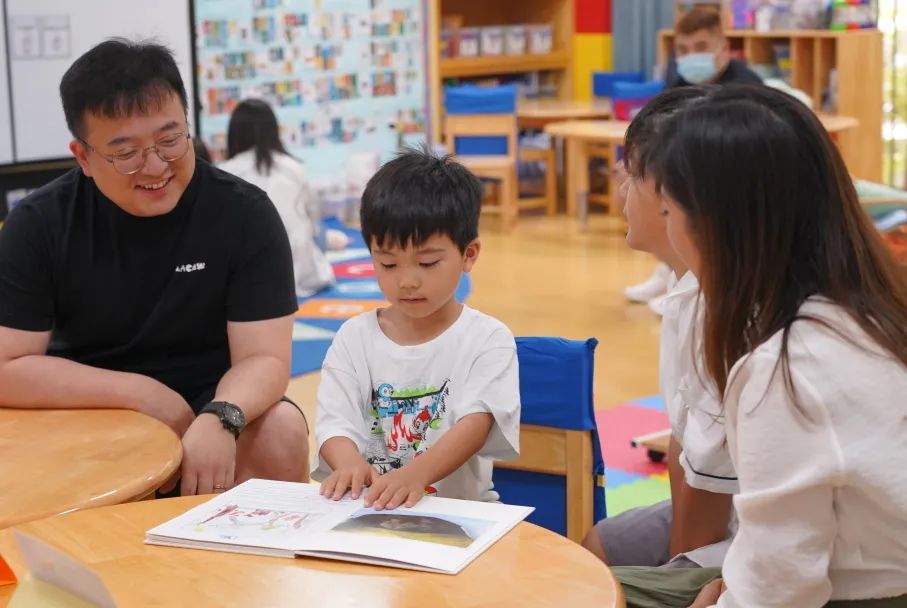PYP Arts-The Vein to All Disciplines | 小学部艺术课程-融合各学科的通道
Art gives us a way to creatively solve problems, collaborate with others, and wrestle with ideas. It really builds the 21st-century skills of critical thinking, collaboration, and creativity.
This week, we interviewed our PYP Visual Arts Teacher, Ms. Laurie Edmonstone, to find out how the PYP Visual Arts team uses the Studio Habits of Mind as frameworks to create little artists at ISNS.
PYP Visual Arts Structure
In PYP Visual Arts, we have standalone units and integrated units. Our standalone units focus on key concepts. For example, in grade three, we work a lot on goals: personal goals and group goals.
We then use the conceptual understandings of the homeroom to uncover and unpack key concepts.
In grade 4, they talk a lot about self-expression. We look more at how artists get ideas and express themselves.
For integrated units in grade 3, students are working on media. It's exciting when kids come to class, and they start making media connections themselves. You can see that they understand that transdisciplinary learning is happening in the unit with other subjects.
Teaching and Learning
PYP Visual Arts
In PYP, we really believe that the child is the artist, and this is their studio. Our classrooms are student-centered, and we are more facilitators and supporters rather than teachers who have all the knowledge and are "teaching" all the skills.
We use the Studio Habits of Mind as a framework, created by Nelson Goodman in 1967. He is a philosopher at Harvard University, and his whole dissertation was about thinking in and through the arts.
https://www.studiothinking.org/the-framework.html
Art isn't just about learning about art history and skills. It's about:
How do we envision?
How do we develop craft?
How do we collaborate with one another?
How do we reflect and think like an artist?
How do we get inspired by different things around us?
In grade 4, we are doing our unit on inspiration, where artists find good ideas. We did an activity where we just looked at stuff right here in the classroom. We noticed more: colors, Ms. Laurie's drawings, different patterns, and tools. We went and did a tour of DP studio space and considered their ideas and inspiration, how they work, their process, and then they asked the artist questions and talked about stealing like an artist.
We talked about fan art, how you can be inspired by characters or by a YouTuber that you're watching.
After that, we discussed how to take key features of things and change them and make them our own. This unit is about them finding their own voices and finding what materials they like. We set up material stations where they had to go and use four different materials because you can get so many great ideas from messing around with the materials. We need to expose the students to many ways of finding ideas. Finally, their final product is going to be any artwork that they want to use to express themselves.
As life-long learners, what is
the importance of learning art?
Art is unique, and it intersects all disciplines - Math, Writing, Literacy, Communication, Experiments, we do them all in art. Art is that vein where you can explore different disciplines in different ways. For younger students, being able to build with their hands and visually see something, and for language learners, sometimes having visuals to communicate ideas is helpful.
Art really gives us a way to creatively solve problems, collaborate with others, and wrestle with ideas. It really builds the 21st-century skills of critical thinking, collaboration, and creativity.
Everyone Can Be an ArtistISNS Visual Arts and Design|视觉艺术与设计第一章
Unique IB-Grade 10 Interdisciplinary Unit (IDU)| IB独有特色教与学-跨学科单元
in•finite Charity Art Exhibition | 「界•非界」慈善艺术展成功开幕
艺术为我们提供了一种创造性地解决问题、与他人合作并探索思想的方式。它真正建立了21世纪的关键技能,如批判性思维、协作和创造力。
本周,我们采访了我们的小学课程视觉艺术老师Laurie Edmonstone,了解小学课程视觉艺术团队如何使用思维工作室的框架来培养ISNS的小艺术家们。
在小学课程视觉艺术中,我们有独立单元和综合单元。我们的独立单元着重于核心概念。例如,在三年级,我们非常注重目标:个人目标和团队目标。
然后我们使用学生所在的班级的概念性理解来揭示和拆解核心概念。
在四年级,他们讨论了很多自我表达。我们更多地关注艺术家如何获得灵感,如何表达自己。
在三年级的综合单元中,学生们正在学习各种媒介。当孩子们来到课堂时非常兴奋,开始建立联系,跨学科学习开始进行。
在小学课程中,我们真正相信孩子是艺术家,这是他们的工作室。我们的课堂以学生为中心,我们更多地是促进者和支持者,而不是老师拥有所有的知识,他们在“教授” 所有技能。
我们将思维工作室作为框架来使用,这是由哈佛大学哲学家Nelson Goodman于1967年提出的。他的整篇论文都是关于通过艺术思考的。
https://www.studiothinking.org/the-framework.html
艺术不仅仅是学习艺术史和学习技能。它是关于:
如何设想;
如何发展工艺;
如何相互协作;
如何反思和像艺术家一样思考;
我们受到周围不同事物的启发;
例如,在四年级我们正在进行的一个单元是关于灵感的,探究艺术家们如何获得好的想法。我们进行了一项活动,就是简单地在教室里寻找灵感。我们注意到了更多的细节:颜色,老师的素描,不同的图案和工具。我们还去了DP工作室参观,了解了艺术家的工作方式、他们的创作过程,然后向他们提问,探讨如何像艺术家一样去 “借鉴”。
我们还谈论了粉丝艺术,即如何从偶像角色或观看的视频主播中获得灵感。
接下来,我们讨论了如何将事物的关键特征改变并使其成为我们自己的。这个单元的目的是让学生找到自己的声音,找到他们喜欢的材料。我们设置了不同的材料工作站,要求学生们使用四种不同的材料,因为通过玩弄材料,他们可以得到很多好的创意。我们需要给学生提供多种发现灵感的方式。最终,他们的作品将是任何他们想要表达自己的作品。
艺术是独特的,它涉及所有的学科——数学、创作、读写、沟通、实验,我们都会用到艺术。艺术是一个探索不同学科的通道。对于年幼的学生来说,用手建造并能够视觉上看到成果,对于语言学习者来说,有时候使用图像来传达想法是很有帮助的。
艺术真正为我们提供了一种创造性地解决问题、与他人合作和思考的方式。它真正培养了21世纪的关键思维、合作和创造力技能。
Everyone Can Be an ArtistISNS Visual Arts and Design|视觉艺术与设计第一章
Unique IB-Grade 10 Interdisciplinary Unit (IDU)| IB独有特色教与学-跨学科单元
in•finite Charity Art Exhibition | 「界•非界」慈善艺术展成功开幕

声明:本文内容为国际教育号作者发布,不代表国际教育网的观点和立场,本平台仅提供信息存储服务。
免费联系ISNS深圳市南山外籍人员子女学校
每天限50个名额
课程设置:IB课程,加拿大课程
学费区间:20-25万




